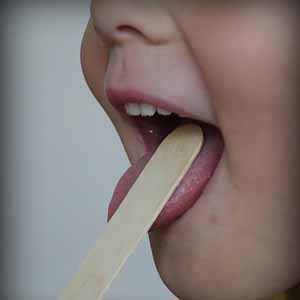Comparison of intravenous injection of magnesium sulfate and lidocaine effectiveness on the prevention of laryngospasm and analgesic requirement in tonsillectomy

Accepted: 28 July 2022
HTML: 63
All claims expressed in this article are solely those of the authors and do not necessarily represent those of their affiliated organizations, or those of the publisher, the editors and the reviewers. Any product that may be evaluated in this article or claim that may be made by its manufacturer is not guaranteed or endorsed by the publisher.
Authors
The aim of the present study is to compare the effect of intravenous (IV)injectionof magnesium sulfate and lidocaine on the prevention of laryngospasm, and analgesic requirement in tonsillectomy surgeries. In this double-blinded clinical trial, 62 children are randomly selected and categorized into two groups. Two minutes after intubation, group A received 15 mg/kg IV magnesium sulfate, while group B received 1 mg/kg IV 2% lidocaine. Laryngospasm frequency, nausea and vomiting, hemodynamic status (in 15 minutes after extubating), sedation score, analgesic requirement, and duration of recovery were compared between the two groups. Data were analyzed using SPSS software version 21 and with a 95% confidence interval. Both groups had no significant difference based on the age and weight means, as well as sex frequency. 10 patients (32.3%) in the lidocaine group and 3 patients in the magnesium group (9.7%) had stridor, and the difference between the two groups was statistically significant (p = 0.026). Laryngospasm only occurred in a patient of the lidocaine group. The frequency of nausea and vomiting, agitation and analgesic requirement in the lidocaine group were higher than the magnesium group (p= 0.001). However, sedation score and recovery time were higher in the magnesium group (p=0.001). No statistically significant difference was seen between the two groups in terms of hemodynamics. Magnesium sulfate and lidocaine had no difference in the incidence of laryngospasm, but magnesium sulfate was associated with a lower rate of stridor, nausea, vomiting, agitation and analgesic requirement in recovery in comparison to lidocaine.
How to Cite

This work is licensed under a Creative Commons Attribution-NonCommercial 4.0 International License.
PAGEPress has chosen to apply the Creative Commons Attribution NonCommercial 4.0 International License (CC BY-NC 4.0) to all manuscripts to be published.

 https://doi.org/10.4081/ejtm.2022.10732
https://doi.org/10.4081/ejtm.2022.10732



